I was back in Omura on a glorious autumn day. Puffs of cumulus slid across cerulean blue skies as I followed a river channel to the Kakogawa, the big river that runs from the heart of the Hyogo mountains to the city of the same name on the Inland Sea coast.
I’d walked this way before on my Japan Standard Timeline walk. It had been winter then, the inside of the river channel looked the same, but the fields edges were brightened by the bright yellow of goldenrod weeds. I passed an abandoned beef restaurant — “Yamato”, with a classic 1990s coat of arms logo and a vaguely Californian look. Who would build such a restaurant here, on a quiet back road? True, the highway and main road were close, but you’d have to know what you were looking for to stop here, no passing traffic would divert across the poorly-lit fields to this place.
The mystery was partly solved by discovering (via Google Maps) another Yamato Beef Restaurant on the main road just a few hundred metres away. This one was California-meets-Germany. Was the one I passed an overflow? Did they build the first one on the country lane, then when land became available shift it to the main road? Google Maps has both restaurants there back to 2004, then the imagery becomes to blurred to distinguish individual buildings.
On the far side of the Kakogawa, I wandered around a neatly-kept park, a kind of modern Japanese-style, with rocks and pools and a mini pagoda-like shelter on an island. Families dumped stuff for riverside play out of cars — fishing gear, badminton rackets and shuttles, camp chairs.
Onward, past the vine-tangled sides of nearly-empty reservoirs showing their muddy bottoms and into woodland. At a crossroads in the woodland I stopped to decide whether to go right or straight on. An obasan hollered at me out of a car window “daijoubu?” Yes, I was daijoubu, I’d figured out I needed to go straight on. I waved and agreed I was daijoubu.
Similar to Murphy’s Law in English-speaking countries, Japan has its Kento’s Laws (which I’ve just made up). Kento’s Law Number One is that when you really want or need a convenience store or vending machine, there will be none to be found. I had assumed I would pass a convenience store or vending machine at some point to buy some lunch, but of course I passed none. Kento’s Law Number Two is that when you really need a pavement (sidewalk), there will be none to be found. The Kinki Nature Trail’s connecting parts between its mountain traverses really seem to specialize in sending you down inappropriate roads. Is the road busy? Yes. Does the road have no pavement, putting you at risk of being scraped into a bloody pulp along a series of roadside trees and vegetation by passing trucks? Yes. Well, that’s the road we’ll use to connect the mountain traverses then. What’s that? There’s a perfectly quiet country lane running parallel to the road? No, of course we won’t send you down that!
On the far side of the highway, I found a path leading up across a small range of hills known as the Ono Alps (Oh no, they’re nothing like the Alps). It wasn’t the official Kinki Nature Trail connecting route, but I was sick of road walking and I could see it would conveniently reconnect with the Kinki Nature Trail farther along. Up I went, passing lycra-clad, double-stick-wielding hikers going both ways. I was rewarded with views out across the coastal plain and the Inland Sea. Then, back down past a leaf-covered pond to the level goldenrod-fringed fields.
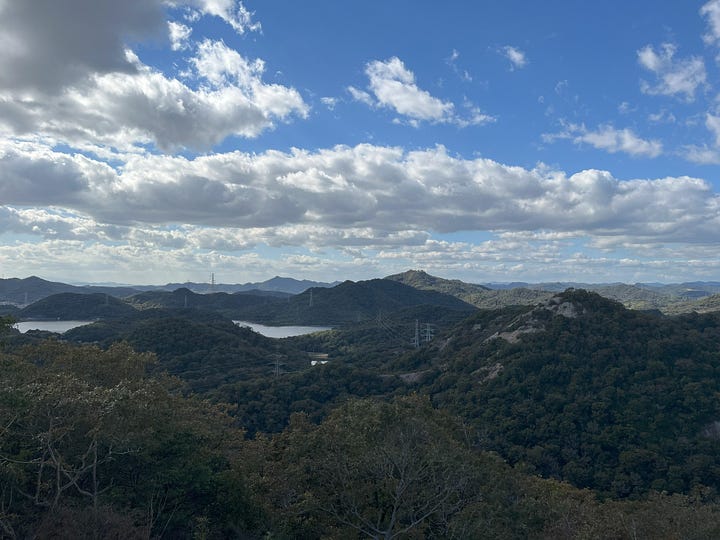
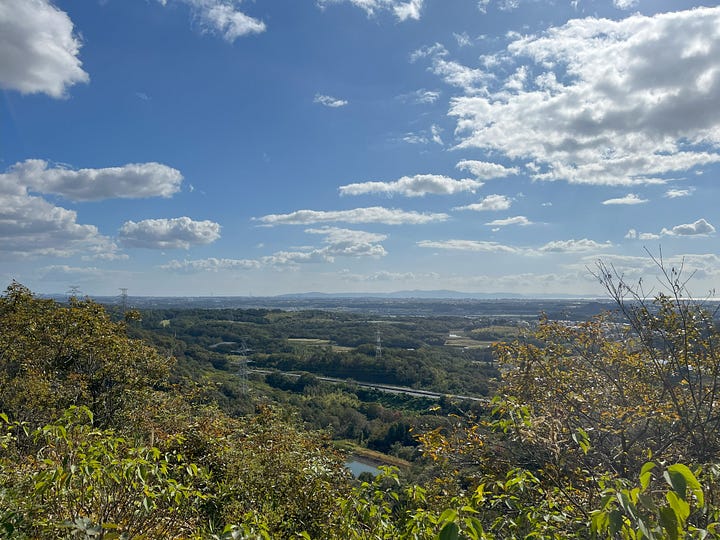
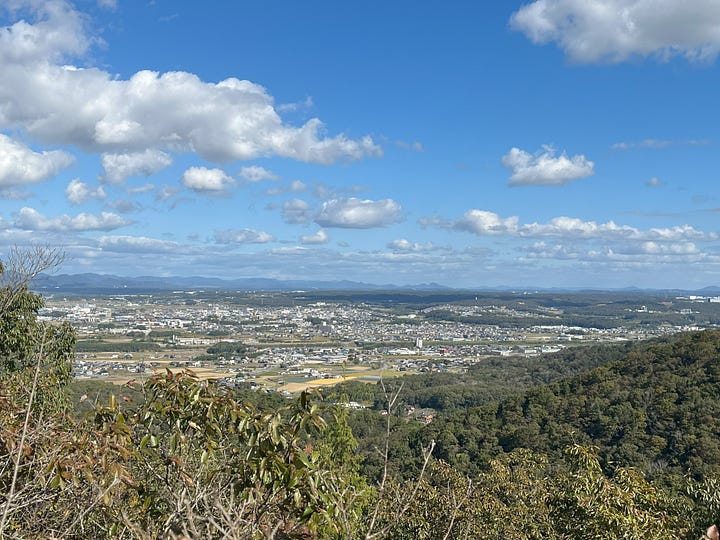

Through a village, no vending machines, no convenience store. Past more reservoirs, still no vending machines. I’d given up on a convenience store, but a vending machine, surely that wasn’t too much to ask? Google Maps showed a truck park next to the highway — prime vending machine territory. But of course, no vending machine.
On the far side of the highway, a construction site (maybe the extension to a highway rest stop) had a pair of vending machines, their clean-whiteness contrasting with the orange-brown dirt of the site. They were tantalisingly close, but the other side of a fence. I could probably hop over the fence, but a group of construction workers were too close, and I was too chicken to end up another Johnny Somali.

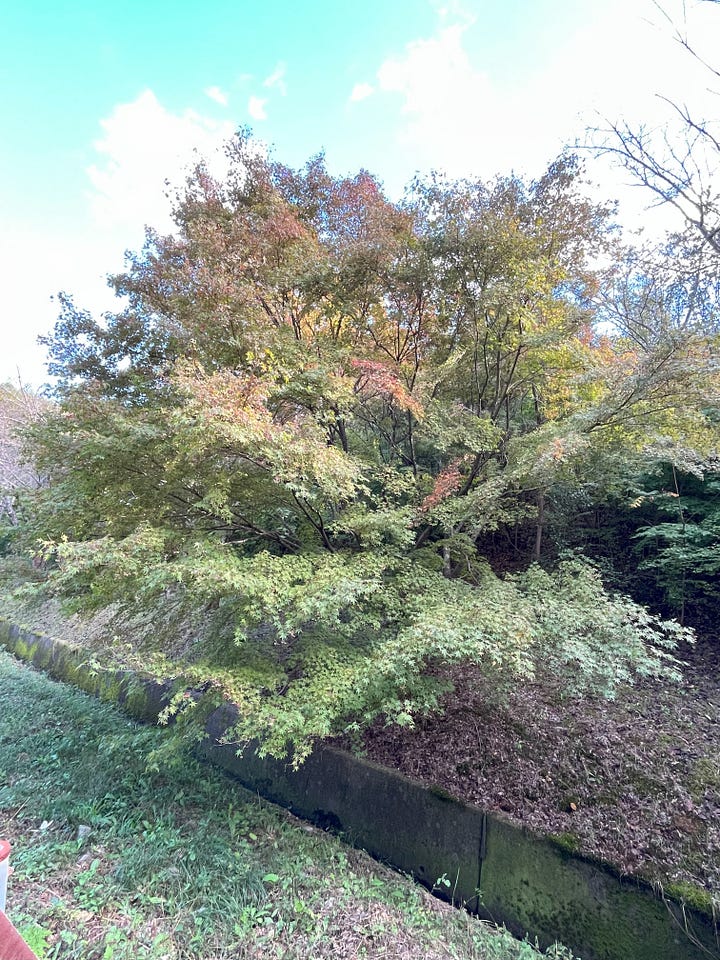
I slogged on, around the edge of a reservoir. The road followed the contours of the edge of the reservoir with incredibly precise determination. Every wiggle of the shoreline was reflected in the road. I dug in my backpack to find anything to eat. Deep down, I found two sweets to help prevent loss of electolytes or whatever during hot Japanese summers. My mouth re-salivated for the first time in miles. It was mid-afternoon, and I hadn’t eaten anything or drunk anything since early morning.
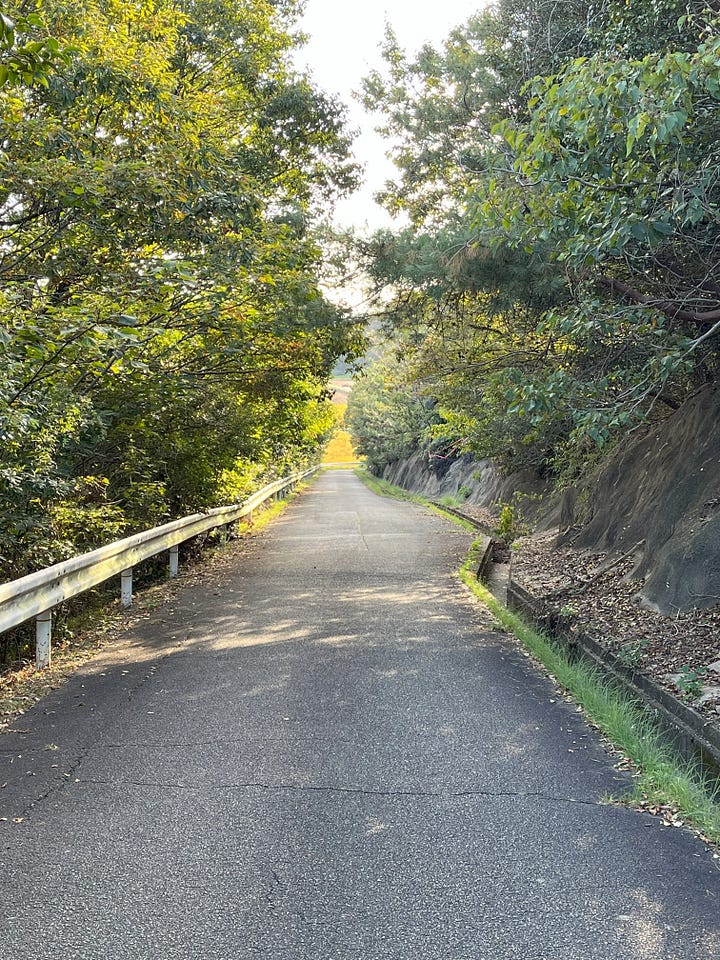
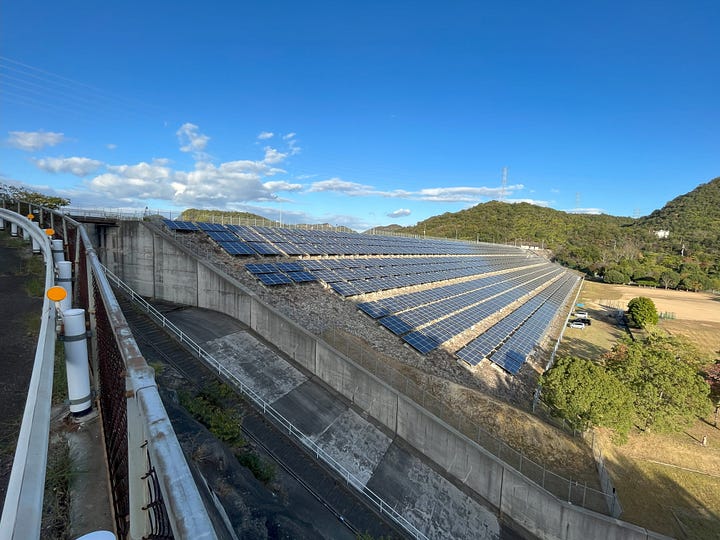
I realised I had to leave the Kinki Nature Trail and cut off to the nearest train station. I passed the solar-panel-covered Gongen Dam and followed a river to the Kakogawa. Wait a moment. The Kakogawa again? I’d spent all afternoon walking, and I wasn’t really any farther west than before.
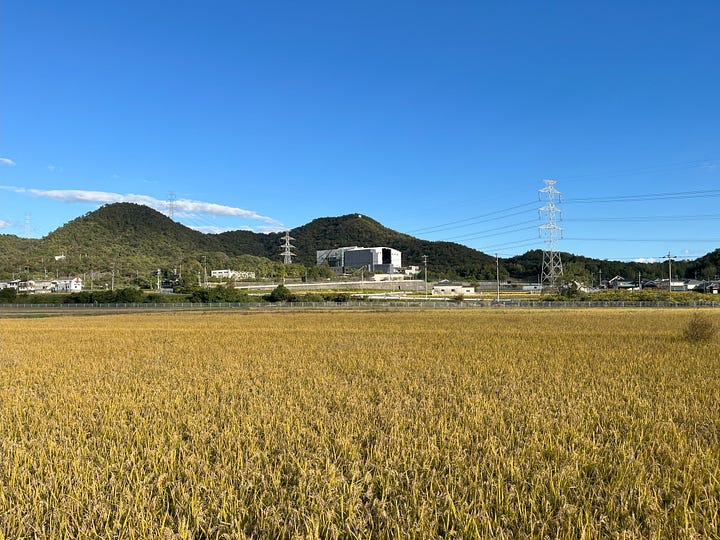

By the time I got to the train station at Kanno, the sun was sinking fast, its pinky-orange light glowing on the apartment blocks. On the other side of the road from the station, an eikaiwa school’s Halloween party was spilling out onto the pavement with statutory shouted English “Happy Halloween”s and “See you”s. And just next to it, o-delight-of-my-eyes, the bright, comforting red of two Coca-Cola vending machines.





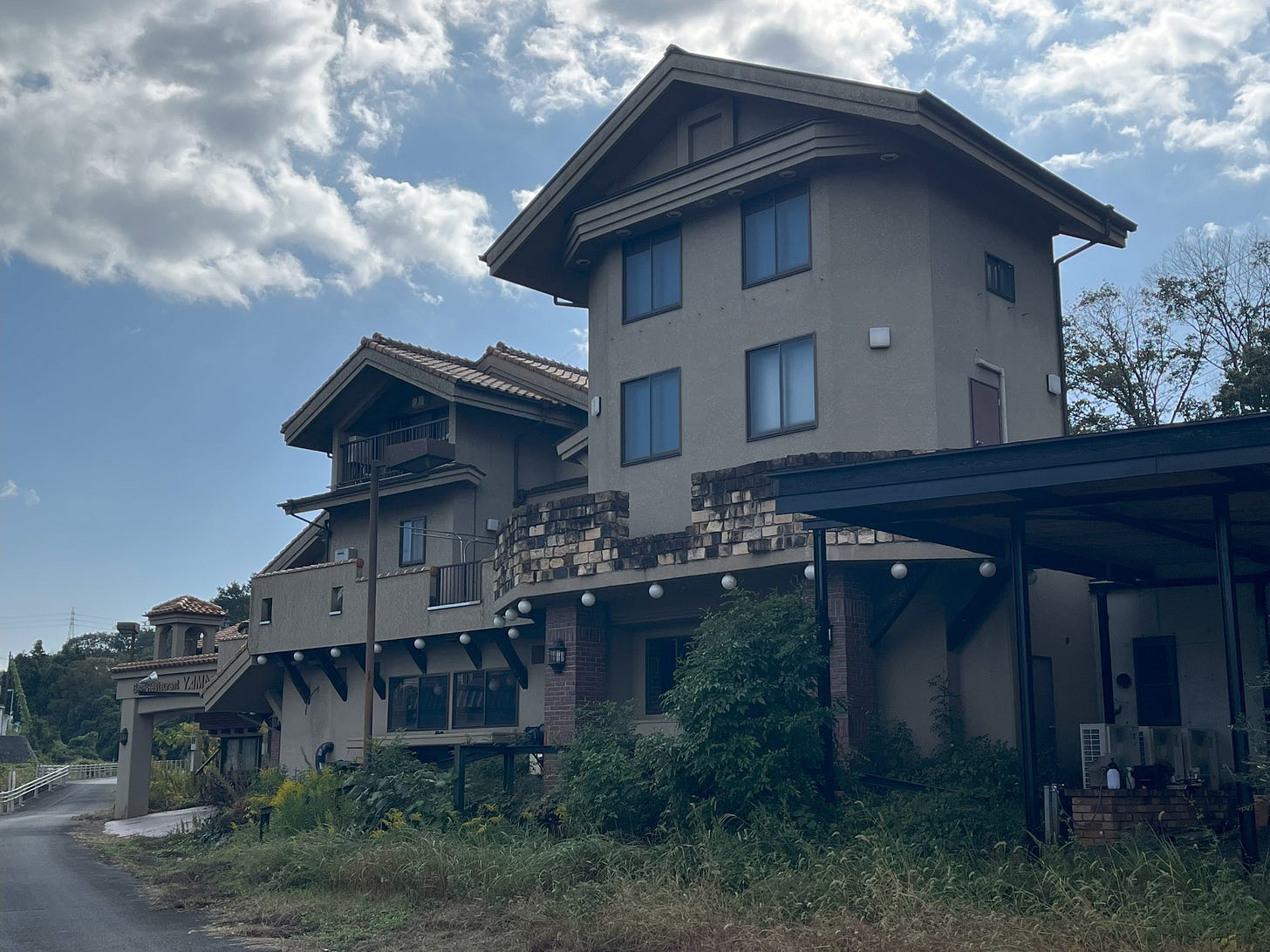

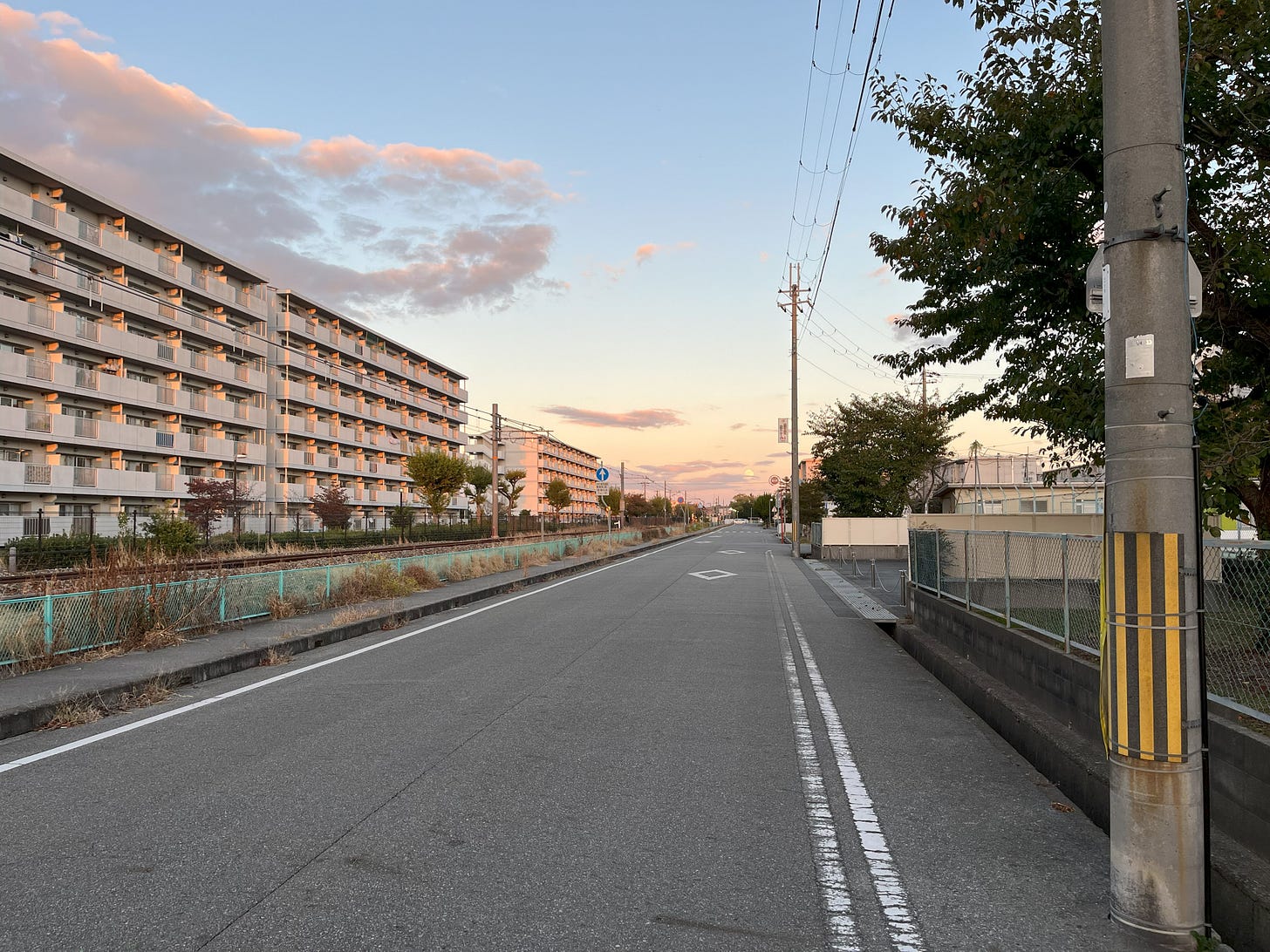
No konbini blues. I had the same experience a couple of weeks ego.
I lived in Japan for a decade and am enjoying your posts having recently discovered your writing here. One house I rented for years in Ichinomiya, Chiba, was surrounded by rice fields. Outside our front gate no more than 10m away were three vending machines: soft drinks, cigarettes, and beer.
This story made me giggle thinking that I can’t recall anytime in Japan that I needed a jidohanbaiki and couldn’t find one!